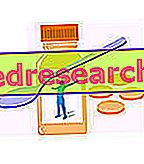By Dr. Michela Folli
All those involved in sports science today feel the duty to spread among the general public the important results achieved by official research, in particular in consideration of the highlighted interrelationship between correct habitual physical exercise and human well-being.

Although the information sector in the scientific area of physical exercise is going through a first period of timid dynamism in Italy, there is no shadow of a doubt that the circulation of information constitutes an indispensable pedestal through which to induce a significant positive population in the population modification of motor habits. With this objective, a cognitive summary of the main biochemical-physiological aspects caused by repeated muscular activity (training) is given below.
* Increased maximum oxygen consumption and cardiac output. The maximum oxygen consumption (VO2 max) is the maximum amount of oxygen that the subject can consume when subjected to maximum intensity dynamic exercise. Proper training can lead to an increase in VO2 max above 20%. The effects of training on cardiac output include an increase in maximum cardiac output (~ 10%), maximum systolic volume (~ 15%) and maximum arteriovenous oxygen difference (~ 6%).
The effects of prolonged bed rest (3 weeks), on the other hand, induce effects contrary to those of training. This demonstrates the malleability of the cardiovascular system, whose superior functional limits are genetically determined, since the maximum cardiac output and maximum oxygen consumption in athletes were systematically higher than those trained, not athletes.
* Reduced heart rate to a given oxygen consumption. The advantages brought by physical exercise to the cardiovascular system are numerous and evident. They have been well known since the late sixties and concern the increase in maximum oxygen consumption, the increase in maximum voluntary ventilation, the decrease in O2 content in arterial blood, the increase in maximum cardiac output and maximum throwing systolic, the increase in the maximum arterio-venous oxygen difference (NB: the maximum heart rate is not a parameter that can be modified with training, but depends essentially on age. Heart rate mx. = 220 - the number of years ).
For positive effect of all these adaptations, the subject is able to sustain the same effort (mechanical work expressed in watts) with a decrease in metabolic power (expressed in ml of VO2 min-1).
* Reduction of blood pressure. Even if there are no completely concordant scientific researches, regular aerobic-type physical activity seems to have positive effects in reducing blood pressure. The mechanisms involved concern both the direct effects of physical exercise on hemodynamic parameters, nervous tissue and the humoral system, and indirect effects through the reduction of body weight.
* Reduction of the work of the heart. The work that the heart performs derives substantially from two variables: heart rate and mean arterial pressure (it is the diastolic pressure, the so-called minimum, plus 1/3 of the differential). Properly active individuals tend to make the heart work less both in rest conditions (consumption of O2 (MVO2) about 20-24 ml min- 1) and in muscular work conditions (100-120 ml min-1). According to the above, all the cardiovascular adaptations induced by a correct training determine a reduction of the myocardial oxygen demand, therefore a reduction of the cardiac work.
* Improved efficiency of the heart muscle. Resistance training, in contrast to isometric training, leads to an increase in end-diastolic volume, that is, in the amount of blood present in the ventricular cavities at the end of the contraction, without causing particular changes in the cardiac walls. Some metabolic adaptations of training that have been found in dogs (increased collateral circulation) cannot be interpreted in the same way for man;
* Increased myocardial vasculature. It is still not completely clear today whether, following training, there is also a concomitant increase in the coronary bed with capillary proliferation. The phenomenon, if confirmed, would have an undoubted effectiveness in protecting many heart diseases. In man it has been shown that the coronary flow, that is the quantity of blood that reaches the heart, is directly proportional to the intensity of the physical exercise and that in the healthy subject phenomena of ischemic origin are not noticed, that is of decreased quantity of blood to the heart compared to its metabolic needs.



